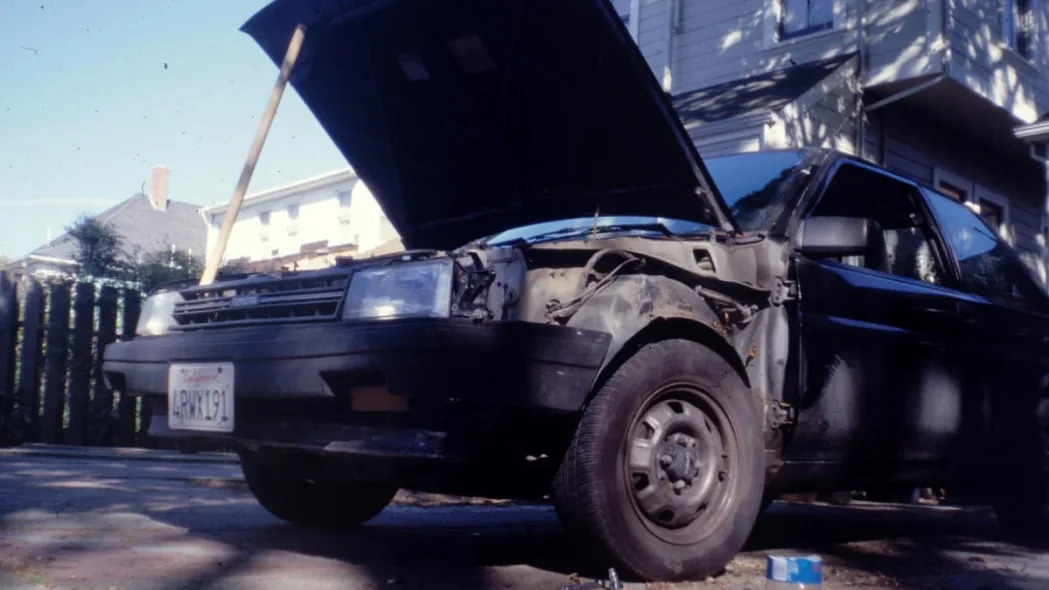Junkyard Gem: 1990 Toyota Tercel EZ

The cheapest new 2024 car available in the United States at the time of this writing is the Nissan Versa S, which starts at $16,290 ($17,225 with destination charge). According to the Bureau of Labor Statistics’ Inflation Calculator, $16,290 comes to about $7,286 in 1990 dollars … and American car shoppers in 1990 had many new cars to choose from with sticker prices well below that figure. Some of them were pretty decent machines, but hindsight tells us that one really stood out for its unbeatable combination of great build quality and bargain-basement price: the Toyota Tercel EZ. I managed to find one of these now-rare cars at a snowy Denver-area self-service yard recently.
The 1987-1990 Tercel was the very cheapest North American-market Toyota of its era, and the EZ trim level was the most affordable Tercel. The EZ had zero frills: rubber floormats instead of carpeting, no right-side mirror, no radio of any sort, not even a sun visor for the passenger. What it did offer was genuine Toyota build quality in a transportation appliance that wasn’t at all fun to drive but got you to your destination every time.

The MSRP for this car was just $6,488, which amounts to $15,647 in today’s money. What could slide under that price tag in 1990? In fact, a surprising number of new cars could pull off the feat, including the Yugo GV ($4,435), the base FWD Subaru Justy ($5,866) the base Hyundai Excel hatchback ($5,899) and its Mitsubishi Precis twin (also $5,899), the Geo Metro XFi ($5,995), the Ford Festiva L hatchback ($6,319), the Suzuki Swift hatchback ($6,399) and the Daihatsu Charade SE hatchback ($6,497). That’s it. The Honda Civic, Dodge/Plymouth Colt/Mitsubishi Mirage/Eagle Summit, Dodge Omni/Plymouth Horizon, Volkswagen Fox, Chevy Cavalier, Ford Escort— all of those cheap cars listed for more than the Tercel EZ in 1990, even in their penny-pinchingest trim levels.

That said, the 1987-1990 Tercel was miserably slow. The only engine available in 1990 was a 1.5-liter straight-four with 78 horsepower and 87 pound-feet.

Worse yet, it was topped by a carburetor, a fuel-delivery technology dating back to the 1870s. Electronic fuel injection had nearly conquered the American automotive world by the dawn of the 1990s, though some holdouts were still using this antiquated hardware in 1990. The Ford LTD Crown Victoria with 351W engine kept its carburetor through 1991, the Subaru Justy remained carbureted through 1992, while the Isuzu pickup managed to resist EFI through 1994 here. This Tercel’s vacuum diagram looks intimidating, but the mid-1980s Honda CVCC “Map of the Universe” was much scarier.

Still, it worked!

Another way in which the Tercel EZ was obsolete was found in the gearbox department. If you bought this car, you got a four-speed manual transmission, period. If you wanted an automatic in a 1990 Tercel, you had to get a costlier trim level. What do you think was the very last new car available in the United States with a four-on-the-floor manual? Yes, the 1996 Tercel.

This car finished its career with an astonishingly low 75,131 miles on its odometer. I’ve found junkyard Tercels with odometers showing well over 350K and even better than 400K miles, so this reading comes as a surprise.

It’s full of shell casings and lithium batteries, no idea why.

There’s also a Ronson Can-Do electric can opener, for some reason.

It had The Toyota Touch.

I daily-drove a 1990 Tercel hatchback with automatic for a while, back in the 1990s (this was the film photography era, so my few photos of it captured my junkyard repairs after I crashed it), and it was distressingly slow. It always worked, though I came to dread driving it so much that I donated it to St. Vincent de Paul for a tax deduction. Would you believe that a clean Tercel EZ fetched $7,250 a couple of years back?
It costs more to park it than it does to drive it.







